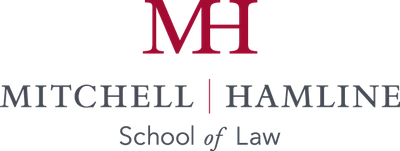Mitchell Hamline School of Law is committed to complying with all applicable intellectual property and copyright laws of the United States. The School provides this information to assist faculty, staff and other community members in understanding and complying with copyright law. It is not a comprehensive or exhaustive guide to the wide diversity of contexts in which the use of copyrighted materials arise nor is it a substitute for legal advice.
Copyright in Education Contents
- Part 1. Copyright Generally
- Part 2. Copyright in Education Basics
- Part 3. Summary of the TEACH Act (17 U.S.C. 110(2))
- Part 4. Linking to Textual Content
- Part 5. Guidance on Applying the Factors of Fair Use
- Part 6. Linking to Audio/Visual Content from the Web in Your Canvas Course
Copyright Generally
Grounded in the U.S. Constitution, copyright is a form of protection provided by the laws of the United States (17 U.S.C. §§ 101-1401) to the authors of “original works of authorship” fixed in a tangible medium of expression including literary, dramatic, artistic, and certain other intellectual works. This protection is available for both published and unpublished works. Section 106 of the Copyright Act of 1976 generally gives the copyright owner the exclusive right to do and to authorize others to do the following:
- Reproduce the work in copies or phonorecords;
- Prepare derivative works based on the work;
- Distribute copies or phonorecords of the work to the public by sale or other transfer of ownership, or by rental, lease or lending;
- Perform the work publicly, in the case of literary, musical, dramatic, and choreographic works, pantomimes, and motion pictures and other audiovisual works;
- Display the work publicly, in the case of literary, musical, dramatic, and choreographic works, pantomimes, and motion picture or other audiovisual work;
- Perform the work publicly (in the case of sound recordings) by means of a digital audio transmission.
It is illegal for anyone to violate any of the rights provided by the copyright law to the owner of the copyright. These rights, however, are not without limits. Sections 107 through 122 of the Copyright Act of 1976 set forth certain limitations on these rights. Set forth in the next section are the exceptions that apply in the educational setting, including the most well-known, fair use.
For further reading:
17 U.S.C. §§ 101-1401 (2017) See: Title 17 in the U.S. Code
